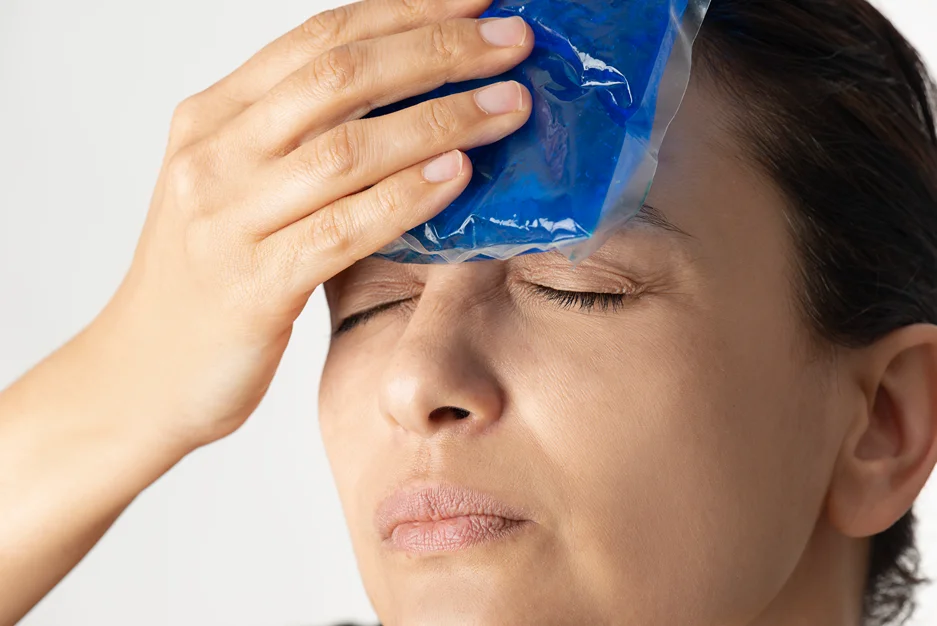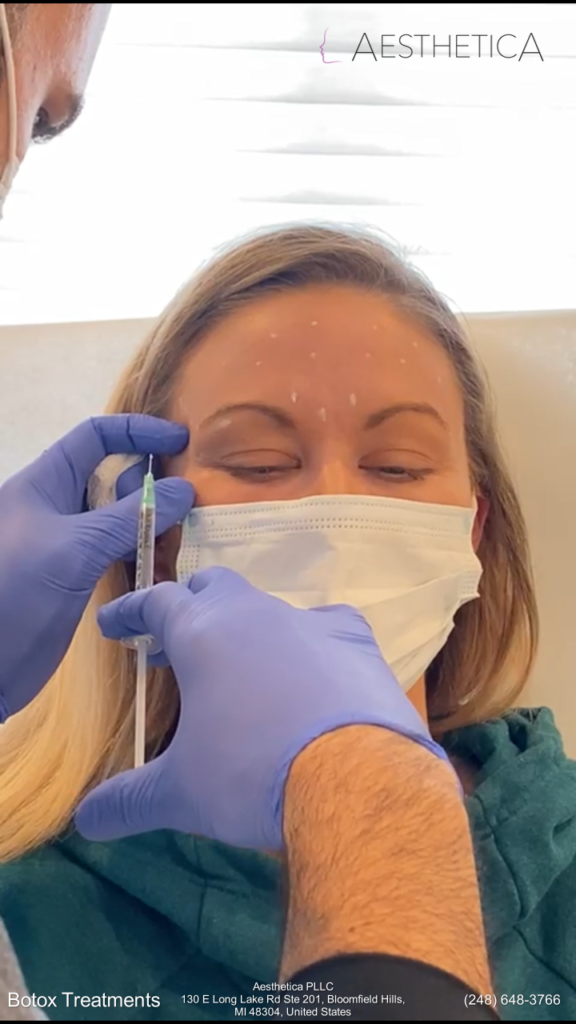
Excessive sweating, often known as hyperhidrosis, is a medical condition that affects many people. This condition causes people to sweat excessively even in cold weather and even when they’re not doing strenuous activities. Sometimes, clinical-strength antiperspirants aren’t enough to address this, which is why there are alternative treatment options for this condition like Botox.
So how long does Botox for excessive sweating last? The effects of this treatment typically last for 3 to 6 months. However, a number of factors including the quality of the treatment, your metabolism rate, and the skill of the provider, can all impact how good your Botox results will be.
Aesthetica can assist you with all your beauty needs, helping you achieve your maximum beauty and aesthetic potential. Call or contact us today to learn more about our cosmetic services.
Botox injections for hyperhidrosis are a popular treatment for excessive sweating. Within one week of effective treatment, 95% of individuals with excessive underarm perspiration saw an average reduction of 83%. The effects usually last about 3 to 6 months.
Botox doesn’t have an immediate effect. Neurotoxins usually take action in 3 to 5 days, but it's customary to wait 7 to 10 days to get full and final results. It takes this long because the toxin must block nerve signals to the muscles. Patients are advised to wait at least 2 weeks after receiving Botox injections. If patients require touch-up Botox injections, they can visit their board-certified dermatologists.
The effect of the neurotoxin will eventually wear off. The nerves will then be able to send signals to the muscles to begin working or contracting again. There will undoubtedly be patients for whom it lasts longer (in the 4 to 6-month range) or for whom it lasts shorter (in the 2-month range). It's also usual for first-timers to discover that it doesn't stay as long after the initial treatment, but after the following procedures, it does. Everyone's experience is different, and the results may differ.
The results will be determined by you and your Botox treatment. How long the Botox injections last is usually determined by how it is administered, the exact dosage, and a variety of other circumstances. Here are several factors that affect how long Botox takes to wear off.
The rate at which Botox is metabolized depends on your individual body chemistry. Botox usually lasts 3 to 4 months. However, those with fast metabolism may break it down sooner. Athletes may observe that their Botox treatments' effects diminish faster. This is due to the fact that an athlete's metabolism is substantially faster than that of inactive people. Physically active people tend to heal faster and eliminate Botox from their bodies faster.
If you're physically active and go to the gym frequently, your Botox may wear off faster than someone who isn't. Physically active people produce receptors faster than most individuals because their bodies are always repairing themselves. These allow new neurotransmitters to form and replace those that have been frozen by Botox, reducing the amount of time it remains on.
In order to obtain the desired effect, individuals with particularly thick face muscles will require additional Botox injections. Because bigger muscles are more challenging to stimulate with injections, additional injections are provided to guarantee that safety standards are fulfilled.
The individual muscle being treated is another aspect that can influence Botox results. Because you’re constantly using your hands throughout the day, Botox and other neuromodulators fade quickly in the muscles that are used the most, such as the palms. Furthermore, the larger the muscle, the faster the effects will subside.
Botox is a medication that requires a customized dosage for people with hyperhidrosis. Because Botox is measured in units, a greater dose will result in more units. Depending on their muscular activity and strength, some patients require more Botox than others. The severity of excessive sweating may also affect the dosage of Botox used on the overactive sweat glands.
For example, people suffering from excessive underarm sweating are recommended a dose of 50 to 100 units. In the case of severe excessive sweating on the armpits, patients will need additional Botox units. Typically, around 50 units per underarm are injected in cases of axillary hyperhidrosis. If the sweat glands in the underarms are overactive, the practitioner may inject 100 units per underarm.
Botox injections must be administered at the exact dosage and at precise injection sites to be effective. It’s critical to choose a highly competent practitioner that has the experience and skill to adapt dose and product placement to each individual in order to achieve a long-lasting sweat-free experience.
The best medical provider precisely targets your muscles and administers injections for optimal results. Seek out Botox specialists that have developed a unique approach for prolonging Botox effects and maximizing treatment advantages, allowing patients to go 4 to 6 months without sweating.
One aspect that can have a favorable impact on Botox results is repetition. This is because, with repeated injections, the sweat glands weaken, allowing the injections' benefits to remain longer. As a result, arranging a follow-up appointment for Botox injections with your healthcare provider can assist you in achieving your long-term goals.
As you have Botox injections more frequently, you will notice that it lasts longer between visits. Some doctors report that their repeat clients can go up to a year without needing a follow-up Botox injection.

The rate at which your body breaks down botulinum toxin injections is determined by a variety of internal and external factors, including the injection site, dosage, and your body's own processes. While you can't control how quickly Botox is metabolized by your body, you can take steps to ensure that the injections last as long as possible and that your results are maximized.
There are a few crucial Botox aftercare guidelines that can help you avoid bruising and obtain the results that are suitable for you, no matter what results you want to achieve with Botox. Here's a quick rundown of what to do and what not to do following your Botox procedure.
To relieve discomfort and minimize swelling, apply cool compresses to the treatment area (not cold). Before being applied to the skin, crushed ice or ice packs should be wrapped in a towel. Ice or anything frozen should not be applied to the skin directly. Cool compresses should be applied every 20 minutes or so.
You should wait at least 24 hours before returning to your normal exercise routine to minimize drug migration from the initial injection site. Even low-impact sports like swimming and yoga can cause Botox to flow away from the treatment areas, so always be careful.
On the day of their Botox session, we strongly advise patients to stay out of the sun. UV rays can induce blood vessels to dilate and boost circulation. This allows the Botox to spread out more quickly, potentially jeopardizing the procedure.
If you can't avoid the sun for whatever reason, use sunscreen with an SPF of 30 or higher. Wearing a wide-brimmed hat can also help to protect you. These two simple steps can help your botulinum toxin injections last longer while also protecting your skin.
During the hours and days following your botox procedure, your skin and any treated areas will recover. The areas will still be prone to bruising during this time, and thinning the blood with alcohol or medications is likely to worsen the bruising effect. If this occurs, you’ll have a longer recovery period because the bruising will take longer to heal than a client who doesn’t have much bruising.
In order to maintain long-term effects, Botox should be administered every 4 to 5 months. The period of treatment may be extended to longer periods if your muscles begin to contract less over time. Regular injections might help you maintain your results, but getting too many in a short period of time can be dangerous. Consult your dermatologist about how frequently Botox treatments should be performed to keep your desired results.

Botox is a widely used medical treatment for hyperhidrosis because of its quick and effective results. Allow time for it to work, and follow any directions given by your doctor. You can have a sweat-free experience without any bruises if you follow the appropriate aftercare instructions.
To get the most out of your Botox treatments and prolong their benefits, we recommend that you follow the advice of your provider. At Aesthetica MI, we address all concerns regarding how to make Botox last longer and provide high-quality and long-lasting treatments. Contact us today to book an appointment.
Aesthetica can assist you with all your beauty needs, helping you achieve your maximum beauty and aesthetic potential. Call or contact us today to learn more about our cosmetic services.